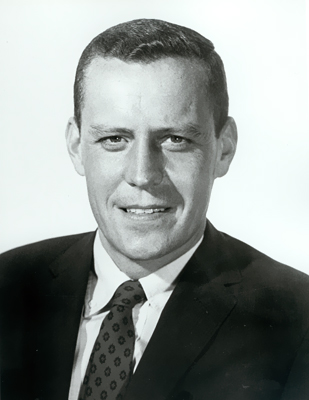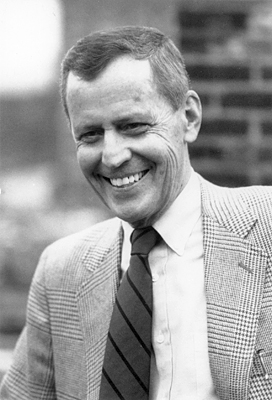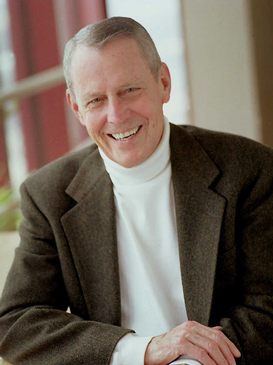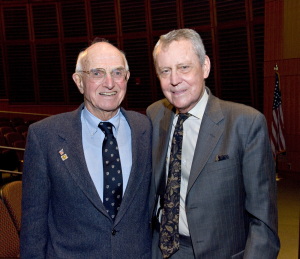<Back to Index>
- Physician Thomas E. Starzl, 1926
PAGE SPONSOR



Thomas E. Starzl (March 11, 1926 - March 4, 2017) was an American physician, researcher and an expert on organ transplants. He performed the first human liver transplants, and has often been referred to as "the father of modern transplantation."
Starzl was born on March 11, 1926 in Le Mars, Iowa, the son of newspaper editor and science fiction writer Roman Frederick Starzl. Originally intending to become a priest in his teenage years, Starzl's plans changed drastically when his mother died from breast cancer. He attended Westminster College in Fulton, Missouri, where he earned a Bachelor of Science degree in biology. Starzl attended Northwestern University Medical School in Chicago, where in 1950 he received a Master of Science degree in anatomy and in 1952 earned both a Ph.D. in neurophysiology and an M.D. with distinction.
Starzl was a surgeon and researcher in the then nascent field of organ transplantation at the University of Colorado from 1962 until his move to the University of Pittsburgh in 1981, where he remained since. He made an exceptional mark on the medical community creating new surgical techniques. He reportedly worked up to three days straight on organ transplantation procedures as he was the only one who could perform them.
Starzl authored or co-authored more than 2,130 scientific articles, four books, and 292 chapters. According to the Institute for Scientific Information, Starzl once averaged one paper every 7.3 days, making him one of the most prolific scientists in the world. In 1999, ISI identified Starzl as the most cited scientist in the field of clinical medicine, a measure of his work's lasting influence and utility.
His autobiographical memoir, The Puzzle People, was named by The Wall Street Journal as the third best book on doctors' lives.
Starzl, his life and achievements, especially his work on FK-506 or tacrolimus, is featured in the book, The Billion - Dollar Molecule [Barry Werth, The Billion-Dollar Molecule: One Company's Quest for the Perfect Drug, 1994.]
Starzl's most notable accomplishments include:
- Performing the first human liver transplant in 1963, and the first successful human liver transplant in 1967, both at the University of Colorado Health Sciences Center.
- Establishing the clinical utility of ciclosporin (cyclosporine) in 1982, and tacrolimus in 1991, both leading to FDA approval;
- Development of multiple technical advances in organ preservation, procurement and transplant;
- Delineating the indications and limitations of abdominal organ transplantation;
- Defining the underlying basis for organ transplantation as a treatment of inherited metabolic diseases (thus providing the rationale for current day gene therapy efforts);
- Recognizing the causative role of immunosuppression in the development of post - transplant lymphoproliferative disease and other opportunistic infections and the utility of reversing the immunosuppressed state as the principal treatment;
- Performing the first simultaneous heart and liver transplant on six year old Stormie Jones in 1984;
- Proposing microchimerism in organ transplant tolerance.
- Carnegie Science Chairman's Award (2010, Carnegie Science Center);
- Gustav O. Lienhard Award (2009, National Institute of Medicine);
- Physician of the Year Award for Lifetime Achievement (2009) presented by Castle Connolly Medical;
- National Medal of Science (2004), presented by President George W. Bush at the White House in 2006;
- John Scott Award (2004);
- King Faisal International Prize for Medicine (2001);
- Lannelongue International Medal (1998, Academie Nationale De Chirurgie);
- Jacobson Innovation Award (1995, American College of Surgeons);
- William Beaumont Prize in Gastroenterology (1991, American Gastroenterological Association);
- Distinguished Service Award (1991, American Liver Foundation);
- David M. Hume Memorial Award (1978, National Kidney Foundation);
- Brookdale Award in Medicine (1974, American Medical Association);
- Bigelow Medal (Boston Surgical Society);
- City of Medicine Award;
- Peter Medawar Prize (The Transplant Society).
Starzl was named one of the most important people of the Millennium,
ranking No. 213, according to the authors of "1,000 Years, 1,000 People:
Ranking the Men and Women Who Shaped the Millennium".
Starzl has also received honorary degrees from 21 universities in the United States and abroad.
In 2006, at a celebration for his 80th birthday, the University of Pittsburgh renamed one of its newest medical research buildings the Thomas E. Starzl Biomedical Science Tower in recognition of his achievements and contributions to the field. On October 15, 2007, the Western Pennsylvania American Liver Foundation and the City of Pittsburgh honored Starzl by dedicating Lothrop Street, near his office and the biomedical research tower bearing his name, as "Thomas E. Starzl Way".
Retired from clinical and surgical service since 1991, Dr. Starzl later devotes his time to research endeavors and remained active as professor of surgery at the University of Pittsburgh School of Medicine and the University of Pittsburgh Medical Center’s (UPMC) program named in his honor: the Thomas E. Starzl Transplantation Institute. Since his “retirement,” he earned the additional distinctions of being one of the most prolific scientists in the world as well as the most cited scientist in the field of clinical medicine.
Dr. Starzl was married two times. He had three children: Timothy Wakefield, Thomas Fitzgerald, and Rebecca Ann (deceased 2008) by his first wife of 20 years, Barbara June (née Brothers) deceased, and none by his second wife, Joy Denise (née Conger).
On the television medical drama Three Rivers, the resume of the fictional transplant pioneer is based on Starzl's accomplishments. In addition, an episode of the television series The 4400 was entitled The Starzl Mutation. The name Starzl was used to refer to the manufacturer of an X-ray machine, a fault in which caused the titular mutation. Whether this is a deliberate reference to Thomas Starzl is unknown.
